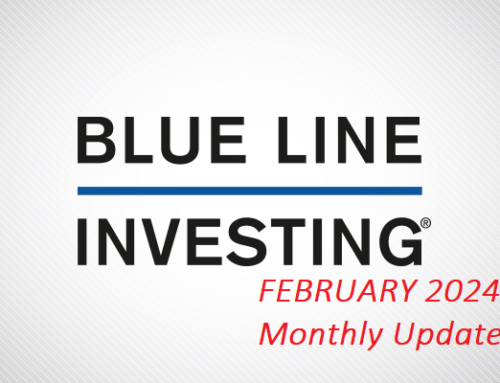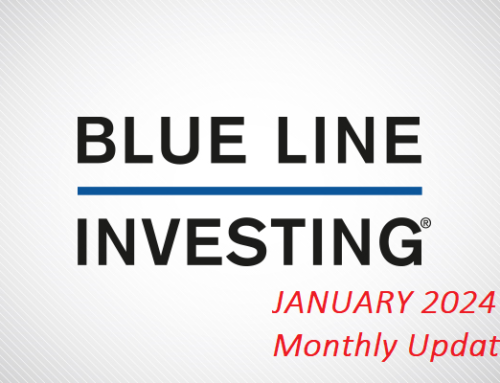We are often asked this question from 401(k) participants and wish we had an easy answer. Unfortunately, there is no “one size fits all” since every participant has unique needs and different financial circumstances. But over the years we have identified 4 steps we believe participants can follow during their working lifetime to attempt to answer the question above. The 4 steps are:
- Create your Asset Allocation
- Create your Equity (Stock) Allocation and Fixed Income (Bond) Allocation
- Create your Deferral Strategy
- Create your Rebalance Strategy
This process is for the participant who wants to be active with their account but with limited time commitment. Part 1 explains the four steps, part 2 provides an example, and part 3 provides additional information. It is being presented as an alternative to a single investment Target Date or Life Cycle investment option available within most 401(k) retirement plans.
Part 1:
Step one is to create your Asset Allocation. Several sample allocations include:
100% Stocks; 0% Bonds
90% Stocks; 10% Bonds
80% Stocks; 20% Bonds
70% Stocks; 30% Bonds
60% Stocks; 40% Bonds
50% Stocks; 50% Bonds
We believe the asset allocation selected should be the one that takes the least amount of risk to earn the annualized rate or return you are attempting to achieve. For instance, if your goal is to achieve a single digit, long-term annualized rate of return, you might select an Asset Allocation from the samples above at the lower end of the list. If however, your goal is to achieve a double digit long-term, annualized rate of return you may need to select an Asset Allocation from the samples above towards the top of the list. Investors tend to invest more money into stocks when they hope to earn higher potential rates of return over the long-term (but at the risk of experiencing greater investment losses as well).
Step two is deciding how you will invest the money within each asset category selected in step one. For purposes of illustration, let’s assume from the samples provided above you selected 70% stocks and 30% bonds. For the money invested to these categories you will need to decide if you will invest all the money in one investment option, or spread out your money over multiple subcategories. This decision may be impacted by the choices available for investment within your 401(k) plan. When in doubt, we recommend that you consult with your existing financial professional if you are working with one, or the financial professional overseeing your company 401(k) plan.
Step three deviates from the previous two steps by focusing on new contributions to your 401(k) account only. In this step you will decide which category – stocks or bonds – will be the primary recipient of your new contribution. We believe a good rule of thumb to follow is based on the number of years you have until retirement. We believe if a participant is many years away from retirement, and depending on how their assets are invested, then they may want to consider investing a large percentage of new contributions into stock investments. If however, the participant has few years remaining to retirement, it may be more appropriate to consider investing more of the new contributions into bond investments. The purpose of this step is to either invest new contributions to attempt to take advantage of price fluctuations when stock markets rise and fall, or take a more defensive approach to attempt to avoid stock market price fluctuations, as much as possible.
Step four is the easiest and final step of the process. It consists of selecting and scheduling a rebalance strategy, if you choose. With today’s technology this step can be automated. First, select how often you intend on rebalancing your 401(k) account – annually, semiannually, or quarterly? We believe quarterly may be too often and annually may not be often enough. Therefore, we prefer semiannually. Then, decide the dates you want to schedule for the rebalancing. One possibility is May 1st and November 1st. According to the late Richard Russell, author of Dow Theory Letters, the six months of the calendar year that are historically associated with positive stock market returns tend to be November 1st through April 30th, while the negative stock market returns tend to occur between May 1st and October 31st. Of course, this may not hold true in any given calendar year, so any two equidistant dates may serve the same purpose.
Next, schedule a recurring reminder on your calendar for those dates each year. When the reminder pops up each year simply log into your account and rebalance your 401(k) account to the allocations you created in Steps one and two. While it may seem like a lot of work to initially set this up we believe it may be worth it. After the initial set up, you may be able to automate the process. The main decisions you will make over the remainder of your working lifetime are: (1) whether to make changes to investment options you are using if new options are added or removed by your company; and (2) whether to change your asset allocation in step 1 as you get closer to retirement (if necessary).
In Part 2 we provide an example to tie all these concepts together.
Part 2:
To illustrate the points made in part 1, the following hypothetical follows a participant who is 40 years old, has earnings from their employment of $75,000 per year, is contributing 10% to their 401(k) account each year, and has a current 401(k) account balance of $50,000.
Step 1: Create your Asset Allocation.
For simplicity let’s assume the participant decided on 70% stock and 30% bond investments. Therefore, of the $50,000 account balance, $35,000 will be allocated to stock investments and $15,000 to bond investments.
Step 2: Create your equity (stock) and fixed income (bond) allocations.
Let’s assume the participant selects investments that fall into the categories below to further subdivide their asset allocation into the stock and bond allocations:
Large Cap Stock Index Fund 25%
Mid Cap Stock Index Fund 15%
Small Cap Stock Index Fund 10%
International Stock Index Fund 20%
Broadly Diversified Bond Mutual Fund 30%
Total 100%
Step 3: Create your deferral strategy.
Since, in this hypothetical illustration, $7,500 is being contributed into the 401(k) during the course of the year, and in this example the participant has many years remaining until retirement, 100% of the new contributions would be allocated to the stock investments only. Since this hypothetical illustration does not include an allocation to bonds, a few simple calculations related to the stock allocation will need to be made. To determine the new percentage for each stock investment being contributed to the plan, this sample participant may choose something similar to the following:
Large Cap Stock Index Fund 25% (from Step 2 above) / 70% = 36%
Mid Cap Stock Index Fund 15% (from Step 2 above) / 70% = 21%
Small Cap Stock Index Fund 10% (from Step 2 above) / 70% = 14%
Int’l Stock Index Fund 20% (from Step 2 above) / 70% = 29%
Total: 100%
Step 4: Select and schedule your rebalance strategy.
Remember – Parts 1 & 2 pertain to the money already invested in this 401(k) account for example, while Part 3 pertains to new contributions only.
Part 3:
What is Asset Allocation?
Asset allocation is an investment strategy that aims to balance risk and reward by apportioning a portfolio’s assets according to an individual’s goals, risk tolerance and investment horizon. The three main asset classes – equities (i.e. “stocks”), fixed-income (i.e. “bonds”), and cash and equivalents – have different levels of risk and return, so each will behave differently over time. (Investopedia.com).
Why should I consider using a different allocation for new contributions compared to money already in my 401(k) account?
The money at risk is the money already invested within a 401(k) account. It is that money that we believe may require a strategic asset allocation. We believe new contributions may be useful to attempt to take advantage of price volatility in stocks over the long-term and during periods between rebalancing.
Why should I consider rebalancing my 401(k) account?
When stock markets rise, asset allocation tends to change and may become “over-weighted” towards stocks. In an attempt to minimize losses in any gains within the account, when stock markets experience a price correction, an investor may choose to rebalance their account. This may help “lock in” some of the gains from appreciated stock prices by moving those gains into other investments that may be more conservative, in nature.
Likewise, when stock markets decline asset allocation tends to change and become “over-weighted” towards bonds. Rebalancing during these times may allow a participant to attempt to “buy low” by selling some of the bonds and invest the proceeds into stock investments that may have experienced a sell-off and are currently trading at a lower price. We believe rebalancing can help take advantage of stock market price volatility over time.
Disclaimer:
Advisory services offered through Gordon Asset Management, LLC (GAM). GAM is an SEC-registered investment adviser. Registration does not imply a certain level or skill or training. More information about the advisor, its investment strategies and objectives, is included in the firm’s Form ADV Part 2, which can be obtained, at no charge, by calling (866) 216-1920. The principal office of Gordon Asset Management, LLC is located at 1007 Slater Road, Suite 200, Durham, North Carolina, 27703.




